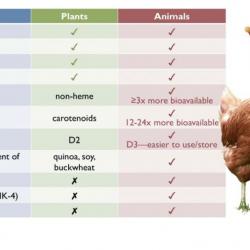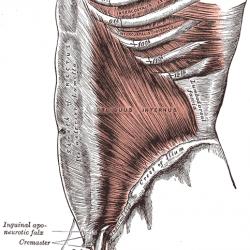Who Is a Candidate for Breast Lift Surgery?
Breast lift surgery, also known as a mastopexy, tightens and restores breast shape to create a more lifted, youthful aesthetic. This procedure can be paired with either a breast augmentation or a breast reduction according to the patient’s goals. Mastopexy is also commonly performed to address both breast and areola aging and/or asymmetry.
In general, a patient is a good candidate for breast lift surgery if they experience any of the following:
- Ptosis (drooping breasts), which may include enlarged areolas
- A loss of breast volume from weight loss, natural aging, pregnancy, or breastfeeding
- Abnormally shaped breasts from a congenital condition
- Downward-pointing nipples and areolas
Each patient’s candidacy for breast lift surgery is informed by their individual anatomy and goals. It is best determined in consultation with a board-certified plastic surgeon. It is also advisable that patients be non-smokers, in good health, and at a stable weight prior to the surgery.
Common age groups for breast lift candidacy
Each patient’s specific needs and desires are different. As such, there is no ideal candidate for a breast lift. Instead, individual patients should discuss their goals in consultation with an experienced, board-certified plastic surgeon. During their consultation, the plastic surgeon can also answer any questions about health and physiological concerns.
Many factors may inform a patient’s desire for a mastopexy, including:
- Pregnancy and breastfeeding
- Natural aging
- A congenital condition
- Significant weight gain or loss
- Loss of skin laxity
Age and health
Most patients seeking a mastopexy do so because of natural aging or life changes to the body. There are also some patients who may need breast lift surgery at a younger age, such as patients with congenital conditions that cause abnormally shaped breasts.
Although a mastopexy does involve undergoing anesthesia, there is no upper limit of age for breast lift candidacy. So long as a patient is in good health, they may be a candidate for mastopexy surgery.
Mastopexy and pregnancy
Although pregnancy and breastfeeding may lead to ptosis (drooping breasts) and therefore inform a patient’s choice to seek out a breast lift surgery, there are also patients who wish to have a breast lift surgery before they are done having children and breastfeeding.
In these cases, it is always encouraged that the patient tells their plastic surgeon about their intentions to become pregnant and to breastfeed again. The results of mastopexy are long-lasting but it is possible for pregnancy and breastfeeding to cause a patient to experience ptosis again.
While this does not mean that patients who want to have more children are not good candidates for a mastopexy, it is important that the patient fully understands the risk of altered results that may come with subsequent pregnancies. Any revisional surgery also becomes more difficult with more inherent risks due to altered blood supply, scar tissue, and a number of other factors.
You are happy with the size but not the shape
In a mastopexy, breast tissue is reshaped and skin is tightened or removed. Although this procedure can be paired with a breast augmentation or reduction, many patients seek out a breast lift surgery when they are happy with the size of their breasts but not the shape.
Patients who are candidates for a mastopexy may have:
- Asymmetrical breasts
- Symmetrical breasts whose shape does not reflect the patient’s desired aesthetic
- Enlarged areolas
- Asymmetrical areolas
- Downward-pointing nipples
Repositioning the areola
Patients often ask if repositioning the areolas is part of a breast lift surgery. The short answer is yes. In a breast lift surgery, certain techniques can be used to resize and reposition the nipple-areolar complex. This is often a necessary component of the surgery to match the newly created overall aesthetic of the breasts.
The right approach for an individual patient’s breast lift surgery can be discussed in consultation with their plastic surgeon.
Weight and current overall health
Patients are good candidates for breast lift surgery if they are:
- In good health
- At a stable weight
- A non-smoker
Overall health
Although age is generally not a factor in determining whether or not someone is a good candidate for a mastopexy, patients are encouraged to be aware of any health considerations prior to having breast lift surgery. In particular, the best candidates for a breast lift tend to be generally healthy non-smokers.
Weight gain and loss
Additionally, it is important for patients to be aware that significant weight gain and loss can impact collagen and skin laxity. For this reason, patients are often counseled to wait until they have achieved a stable weight +/- 10 pounds before having a breast lift surgery.
With that said, each patient’s journey will depend on their individual anatomy and goals. Your own timeline for breast lift surgery is best determined in consultation with your board-certified plastic surgeon.
Maintaining the results
Significant changes in weight can influence ptosis and skin laxity, as can life changes such as pregnancy and breastfeeding. To best maintain the long-lasting and natural-looking results of a breast lift, patients are encouraged to maintain a stable weight after surgery.
Optimal results are also preserved when patients adhere to recovery guidelines, including avoiding upper body stretching or strenuous exercise in the first few weeks after surgery.
Each surgeon has their own individual post-operative recovery recommendations, much like they have their own surgical technique. Consulting with them early to prepare for this period will ensure minimal stress and a smooth recovery after surgery.
More to Read:
Previous Posts:







